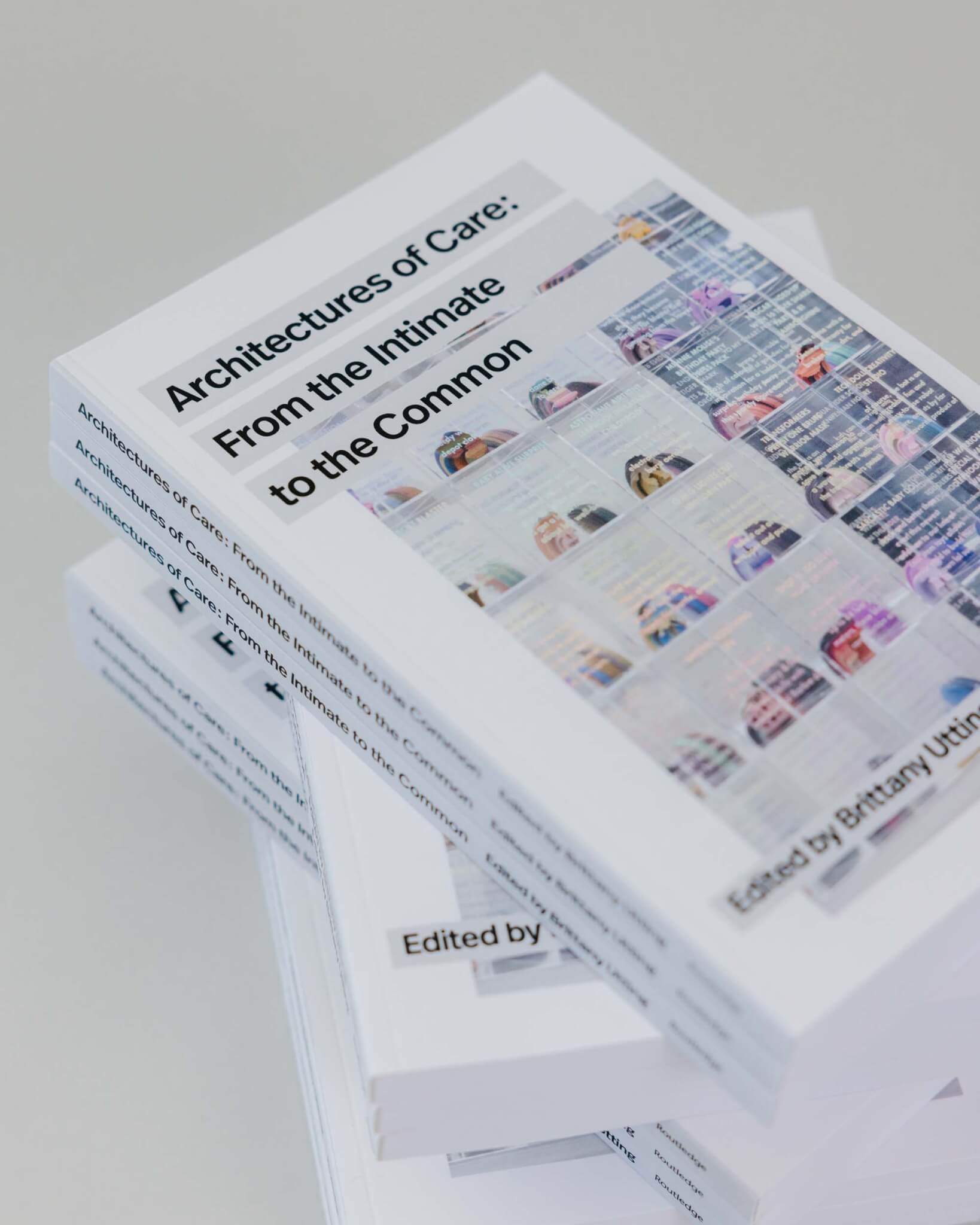Architectures of Care: From the Intimate to the Common
Edited by Brittany Utting | Routledge | $48.95
In recent years, the discourse around care and its definitions has infiltrated architecture and urbanism. This is evident in works such as Angelika Fitz and Elke Krasny’s 2019 edited volume Critical Care: Architecture and Urbanism for a Broken Planet (The MIT Press), the work of Gabu Heindl and Rural Urban Framework, and the efforts of design nonprofits like Emergency Architecture & Human Rights (EAHR) and Kounkuey Design Initiative. The new volume Architectures of Care: From the Intimate to the Common, edited by Brittany Utting, is one of the most comprehensive contributions to this discourse, whose origins can be traced to developmental psychology. In the 1970s, the psychology of moral development was dominated by the “ethic of justice” which focused on the application of universal, abstract principles of justice. But Utting’s selected writings by a range of authors including architect Neeraj Bhatia, philosopher Hélène Frichot, and designer Elsa MH Mäki develop an ethics of care that challenges its conventional definitions within architectural practice.

In her introduction, Utting reveals that the legal definition of care has been present for more than a century. She traces the “standard of care” in architecture to the 1896 Coombs v. Beede court case, which defined it as the exercise of reasonable skill and judgment expected from architects in a similar geographical area. Utting argues that, although design and construction is vastly more complex today, the American Institute of Architects (AIA) defines the standard of care in strikingly similar terms: “The Architect shall perform its services consistent with the professional skill and care ordinarily provided by architects practicing in the same or similar locality under the same or similar circumstances.”
This limitation “in the same locality” informed the structure of Architectures of Care. In order to acknowledge the built environment as entangled with larger processes such as extractive economies and infrastructures, including the global fiber optic network, chapters are organized in three parts corresponding to three scales: the body, the collective, and the planetary.
“Intimacy and Interdependence” first addresses the most local scale: care for individual bodies. Ignacio G. Galan’s chapter “Disabled Domesticities and the Politics of Bathrooms” examines the 1970s Independent Living Movement (ILM) that revolutionized bathroom design standards. In “Domesticity and the Architecture Film,” Lilian Chee analyzes the relationship between domestic space and architectural maintenance, primarily in the documentary films of Ila Bêka and Louise Lemoine. A photo essay by Ian Mun from their film Objects for Thriving (2022) concludes this chapter with a contemplative visual interlude between the works of scholarship.
“Collective Power and Conflict” follows, ascending to the collective scale. Here, writings explore care as a site of collective struggle, from representations of working-class identity and labor movements to histories of communal action and national healthcare in Appalachia. In “Commoning Practices as a Form of Care,” Neeraj Bhatia discusses 1960s Northern California communes like the Kaliflower and the Black Panther Party. These counter-institutions of care involved multi-scalar approaches that inspired new models of freedom. Through mutual aid programs, Bhatia observed, new institutions provided new forms of resilience, solidarity, and local agency in people’s daily lives.
The third and final part, “Landscapes of Repair,” asks, “how can we work on the world without repeating the scalar logics of expansion and extraction inherent to modernity?” These chapters answer with a politics of care that address devastations to the natural environment including essays on new spatial practices in environmental stewardship, and disruptions to the global infrastructure of the internet. Drawing from Mierle Laderman Ukeles’s 1960s “maintenance art,” Hélène Frichot wrote a “care manual” for architects that examines Parc Leon Aucoc’s understated public space design by Lacaton and Vassal in 1996. “What happens if architects do not assume the outcome to a spatial problem is a new building?” Frichot asked. “Can maintenance constitute a project in its own right, one of world-mending as distinct from worldbuilding?” This chapter briefly mentions Carol Gilligan, but Architectures of Care is rich with contemporary ideas that build on her ethics of care from 50 years ago.
Each chapter projects concepts of care into new discursive territories that overcome the pitfalls associated with care such as gender differences, power imbalances, and the uneven allotment of the responsibilities of care to women, communities of color, and immigrants. But under Utting’s editorial lens, these concepts crucially go one step further: Care is expressed through the material, spatial, and labor practices of architecture. Architectures of Care is a demonstration, manual, and analysis of these many practices. Collectively, each chapter challenges the legal standards of care that govern the foundations of our discipline.
Paul Mosley is an assistant professor of architecture and urban design in the College of Architecture and Environmental Design at Kent State University.











